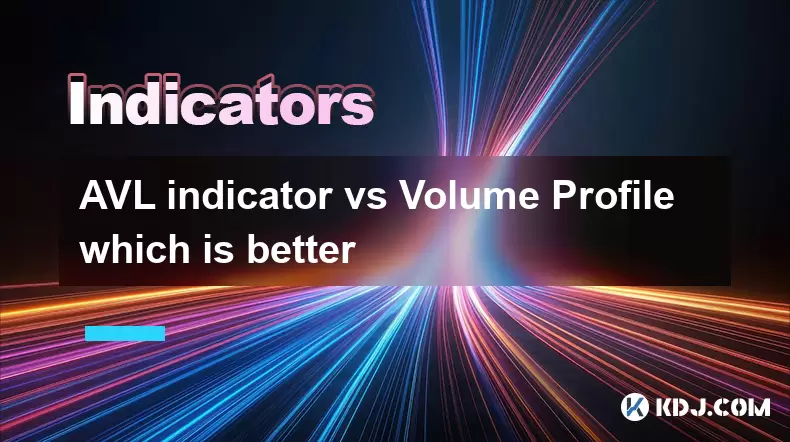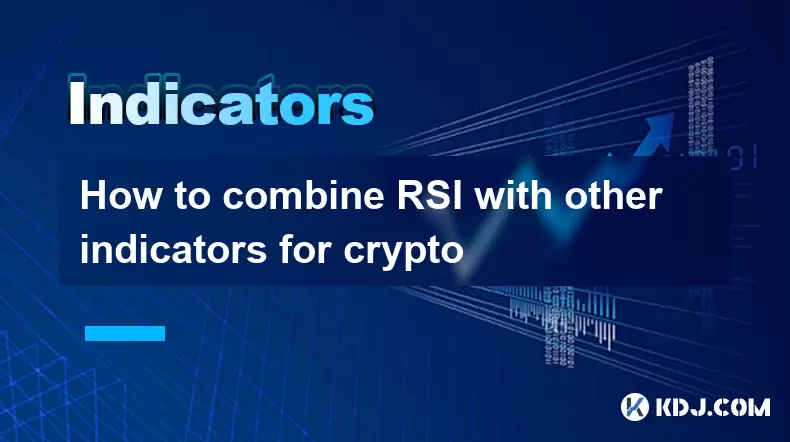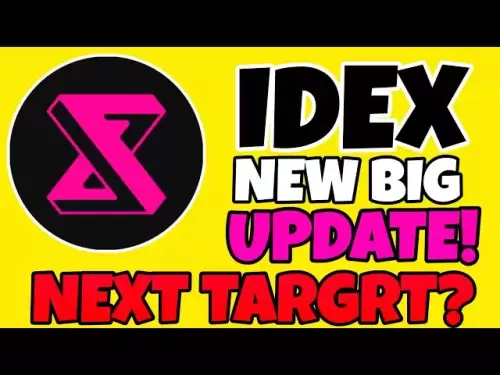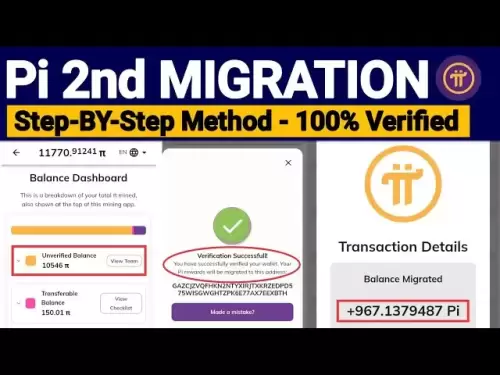-
 Bitcoin
Bitcoin $117,991.5647
-0.03% -
 Ethereum
Ethereum $2,966.4808
0.18% -
 XRP
XRP $2.8076
0.64% -
 Tether USDt
Tether USDt $1.0003
0.00% -
 BNB
BNB $689.9050
-0.63% -
 Solana
Solana $162.0407
-0.80% -
 USDC
USDC $0.9999
0.00% -
 Dogecoin
Dogecoin $0.1995
-1.51% -
 TRON
TRON $0.3001
-1.21% -
 Cardano
Cardano $0.7426
3.25% -
 Hyperliquid
Hyperliquid $47.7978
2.84% -
 Stellar
Stellar $0.4411
16.52% -
 Sui
Sui $3.4267
0.15% -
 Chainlink
Chainlink $15.3148
0.07% -
 Bitcoin Cash
Bitcoin Cash $506.5880
-1.91% -
 Hedera
Hedera $0.2222
12.41% -
 Avalanche
Avalanche $21.2049
1.67% -
 UNUS SED LEO
UNUS SED LEO $9.0606
-0.19% -
 Shiba Inu
Shiba Inu $0.0...01325
-0.86% -
 Toncoin
Toncoin $2.9979
0.32% -
 Litecoin
Litecoin $94.3717
1.13% -
 Polkadot
Polkadot $3.9873
-0.29% -
 Monero
Monero $336.1497
0.92% -
 Dai
Dai $0.9999
-0.01% -
 Uniswap
Uniswap $8.5189
-0.60% -
 Ethena USDe
Ethena USDe $1.0005
-0.04% -
 Pepe
Pepe $0.0...01236
-0.92% -
 Bitget Token
Bitget Token $4.4002
-0.23% -
 Aave
Aave $303.5433
1.05% -
 Bittensor
Bittensor $391.1314
-0.35%
AVL indicator vs Volume Profile which is better
The AVL indicator and Volume Profile offer unique insights into momentum and price levels, helping traders gauge market sentiment and identify high-probability trade setups in cryptocurrency markets.
Jul 13, 2025 at 09:50 am

Understanding the Basics of AVL Indicator
The AVL indicator, also known as the Accumulation/Distribution Line, is a momentum oscillator used in technical analysis to assess buying and selling pressure. It is calculated by multiplying the volume by the close location value (CLV), which is determined by whether the price closes near its high or low for the period. The resulting values are then cumulated over time.
Key features of the AVL indicator include:
- It reflects the relationship between price and volume.
- Helps identify potential reversals when there’s a divergence between the indicator and price.
- Useful in confirming trends; rising AVL supports an uptrend, while falling AVL suggests weakening momentum.
Traders often use the AVL indicator to validate breakouts or breakdowns in price charts. For instance, if the price breaks above resistance but the AVL fails to rise accordingly, it may signal a false breakout.
Exploring Volume Profile and Its Significance
Volume Profile is a tool that shows how much volume was traded at specific price levels over a defined period. Unlike traditional volume bars that display total volume per time interval, Volume Profile provides insight into where significant trading activity occurred on the price chart.
Core aspects of Volume Profile:
- Highlights areas of high volume (value areas) and low volume (price rejection zones).
- Assists traders in identifying support and resistance levels based on past trading behavior.
- Offers insights into institutional order flow and market sentiment.
In cryptocurrency trading, where volatility can be extreme, Volume Profile helps traders understand where large orders were historically placed. This is especially useful in range-bound markets or during consolidation phases.
Comparing Accuracy in Trend Confirmation
When it comes to trend confirmation, both the AVL indicator and Volume Profile serve different purposes. The AVL indicator is more effective in showing the strength behind a trend movement. A rising AVL line during an uptrend indicates strong accumulation, while a declining AVL line in a downtrend confirms distribution.
On the other hand, Volume Profile does not directly indicate trend direction but rather the significance of certain price levels. High-volume nodes act as anchors for future price action. For example, if Bitcoin repeatedly trades through $30,000 with high volume, this level becomes a key reference point for traders.
- In trending markets, AVL offers clearer signals regarding momentum shifts.
- In ranging or consolidating markets, Volume Profile reveals critical support/resistance levels.
Both tools complement each other, but their effectiveness depends on the trader's strategy and timeframe.
Evaluating Divergence Detection Capabilities
Divergence detection is one of the strongest suits of the AVL indicator. When the price makes higher highs but the AVL line makes lower highs, it signals weakening buying pressure — a bearish divergence. Conversely, bullish divergence occurs when the price makes lower lows but the AVL line forms higher lows.
Volume Profile, however, doesn’t detect divergences in the same way. Instead, it shows discrepancies in volume concentration. For instance, if price moves sharply without corresponding volume at new highs, it may suggest lack of conviction among traders — a possible early sign of reversal.
- AVL excels at spotting classical technical divergences.
- Volume Profile highlights imbalances in participation across price levels.
For crypto traders dealing with fast-moving assets like altcoins, combining both tools can enhance accuracy in detecting early signs of trend exhaustion.
Application in Cryptocurrency Trading Strategies
In the context of cryptocurrency trading, both tools have distinct applications:
Using the AVL indicator:
- Look for crossovers with its signal line (if available) to generate trade signals.
- Monitor for divergences during strong rallies or sell-offs.
- Combine with moving averages or RSI for multi-indicator confirmation.
Using Volume Profile:
- Identify key horizontal support/resistance zones based on high-volume nodes.
- Watch for price revisiting these zones for potential bounce or breakout opportunities.
- Use Point of Control (POC) and Value Area High/Low to gauge market structure.
Many experienced crypto traders integrate both indicators into their strategies. For example, they might use Volume Profile to pinpoint a high-probability trade zone and then look for AVL confirmation before entering a position.
Which One Should You Prioritize?
Prioritizing between AVL indicator and Volume Profile depends largely on your trading style and objectives:
- Day traders focusing on momentum and quick reversals may find the AVL indicator more actionable due to its real-time feedback on buying/selling pressure.
- Swing traders or those analyzing broader support/resistance structures might lean toward Volume Profile to understand where the market has shown interest historically.
There is no definitive answer to which is "better" because they serve complementary roles. However, understanding how each functions within the crypto market's unique dynamics is crucial.
Frequently Asked Questions
Q1: Can I use AVL and Volume Profile together effectively?
Yes, many traders combine the AVL indicator with Volume Profile to gain a more comprehensive view of market conditions. While AVL provides momentum insights, Volume Profile adds structural clarity.
Q2: Is Volume Profile reliable in low-volume cryptocurrency pairs?
Volume Profile can still provide useful data in low-volume pairs, but the results may be less accurate due to limited historical volume data. It works best on major pairs with sufficient liquidity.
Q3: Does AVL work well in sideways markets?
The AVL indicator tends to oscillate around a central line in sideways markets, making it harder to extract clear directional signals. In such cases, Volume Profile may offer better guidance.
Q4: How do I set up AVL and Volume Profile on popular trading platforms like TradingView?
Both indicators are readily available on TradingView. To add them:
- Click on “Indicators” > search for “Accumulation/Distribution” for AVL.
- For Volume Profile, type “Volume Profile” in the indicator search bar and apply it to the chart.
Disclaimer:info@kdj.com
The information provided is not trading advice. kdj.com does not assume any responsibility for any investments made based on the information provided in this article. Cryptocurrencies are highly volatile and it is highly recommended that you invest with caution after thorough research!
If you believe that the content used on this website infringes your copyright, please contact us immediately (info@kdj.com) and we will delete it promptly.
- Little Pepe, Pepe Coin, and Bonk: Meme Coin Mania Sweeping Crypto in 2025!
- 2025-07-13 22:36:38
- ADA, NEAR, BlockDAG: Crypto Trends and Insights You Can't Miss (NYC Style)
- 2025-07-13 22:36:38
- TRUMP Tokens Unlocked: A Deep Dive into World Liberty Financial and Aqua 1's $100M Investment
- 2025-07-13 22:50:37
- Cryptos Under $0.10: Solana's Successors and the Top 10 Potential
- 2025-07-13 22:50:37
- Crypto, Gold, and Bitcoin: A New York Minute on the Digital Gold Rush
- 2025-07-13 20:30:16
- Crypto iGaming in India: JetTon, LunarBet, and the Evolving Landscape
- 2025-07-13 20:50:16
Related knowledge

Advanced RSI strategies for crypto
Jul 13,2025 at 11:01am
Understanding the Basics of RSI in Cryptocurrency TradingThe Relative Strength Index (RSI) is a momentum oscillator used to measure the speed and chan...

Crypto RSI for day trading
Jul 12,2025 at 11:14am
Understanding RSI in the Context of Cryptocurrency TradingThe Relative Strength Index (RSI) is a momentum oscillator used to measure the speed and cha...

Crypto RSI for scalping
Jul 12,2025 at 11:00pm
Understanding RSI in the Context of Crypto TradingThe Relative Strength Index (RSI) is a momentum oscillator widely used by traders to measure the spe...

What does an RSI of 70 mean in crypto
Jul 13,2025 at 06:07pm
Understanding the RSI Indicator in Cryptocurrency TradingThe Relative Strength Index (RSI) is a widely used technical analysis tool that helps traders...

How to avoid RSI false signals in crypto
Jul 13,2025 at 06:21pm
Understanding RSI and Its Role in Crypto TradingThe Relative Strength Index (RSI) is a momentum oscillator used to measure the speed and change of pri...

How to combine RSI with other indicators for crypto
Jul 12,2025 at 08:35am
Understanding the Role of RSI in Crypto TradingThe Relative Strength Index (RSI) is a momentum oscillator that measures the speed and change of price ...

Advanced RSI strategies for crypto
Jul 13,2025 at 11:01am
Understanding the Basics of RSI in Cryptocurrency TradingThe Relative Strength Index (RSI) is a momentum oscillator used to measure the speed and chan...

Crypto RSI for day trading
Jul 12,2025 at 11:14am
Understanding RSI in the Context of Cryptocurrency TradingThe Relative Strength Index (RSI) is a momentum oscillator used to measure the speed and cha...

Crypto RSI for scalping
Jul 12,2025 at 11:00pm
Understanding RSI in the Context of Crypto TradingThe Relative Strength Index (RSI) is a momentum oscillator widely used by traders to measure the spe...

What does an RSI of 70 mean in crypto
Jul 13,2025 at 06:07pm
Understanding the RSI Indicator in Cryptocurrency TradingThe Relative Strength Index (RSI) is a widely used technical analysis tool that helps traders...

How to avoid RSI false signals in crypto
Jul 13,2025 at 06:21pm
Understanding RSI and Its Role in Crypto TradingThe Relative Strength Index (RSI) is a momentum oscillator used to measure the speed and change of pri...

How to combine RSI with other indicators for crypto
Jul 12,2025 at 08:35am
Understanding the Role of RSI in Crypto TradingThe Relative Strength Index (RSI) is a momentum oscillator that measures the speed and change of price ...
See all articles

























































































